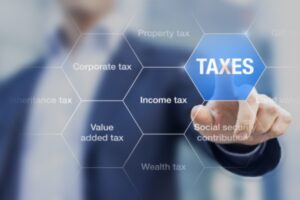The Goods & Services Tax (GST) in Australia has many layers and complexities. However, starting with a clear understanding of its fundamental principles will allow most entrepreneurs to get started, so let’s delve into the core aspects of GST.

Understanding GST: A Primer
GST operates as Australia’s broad-based consumption tax, levied at a standard rate of 10%. Its primary objective is to generate revenue for the Government by taxing private non-business consumption of goods and services. However, not all transactions fall within GST or attract the 10% rate, as certain sales and supplies enjoy exemptions under GST Free and Input Taxed Supplies categories.
It is the obligation of registered service providers to collect this 10% GST and pay it to the ATO, after netting off GST credits that they have been charged in connection with making their own Taxable and GST Free supplies. A payment or refund of GST is facilitated by lodgement of a Business Activity Statement (BAS).
GST Registration: Who Needs It?
Businesses and sole traders are obligated to register for GST when their operations constitute an “enterprise” and their turnover is expected to exceed the turnover threshold. An enterprise encompasses commercial activities and certain one-off transactions pursued with profit motives, distinguishing them from non-business pursuits such as hobbies. That said, registered charities and not-for-profits still have registration requirements.
What is the Turnover Threshold
The turnover threshold is set at $75,000 over a 12-month period for taxpayers running a for-profit enterprise. Non-for-profit enterprises have a registration threshold of $150,000.
When sales exceed this threshold in the preceding 12 months or are projected to surpass it in the upcoming 12 month period, registration becomes compulsory. Importantly, the turnover test focuses solely on gross turnover rather than net profitability and excludes “input taxed supplies”.
What is GST Free and Input Taxed?
If a supply qualifies as being GST Free, this means the supplier does need to add 10% GST to the sale, but can still reclaim full GST credits on purchases that relate to those supplies.
Input taxed supplies also do not need to add 10% GST, but in contrast to GST Free cannot reclaim full GST credits on purchases that relate to those input taxed supplies. Input taxed supplies include residential rental income and a broad range of financial supplies.
Which supplies are GST Free?
There is a specific list of GST-free supplies in Australia, which come under a variety of broader categories under GST laws. The main GST-free items are; exports, health, food, education, international travel and international/export supplies, and certain charitable activities. The list of GST Free supplies is longer than this, these are just the main categories.
Navigating Business Activity Statements (BAS)
BAS, the document for GST reporting (and PAYG withholding and instalments), requires monthly or quarterly lodgement with the ATO. Most businesses & taxpayers will lodge quarterly, although some will lodge monthly if they typically get a refund of GST or have turnover exceeding $20m.
Navigating the intricacies of GST demands diligence and comprehension of its regulatory framework. Armed with insights into registration thresholds, BAS lodgements, and the nuances of GST-free supplies, businesses can navigate taxation obligations with ease. For more information or to discuss your personal circumstances, reach out to the Accru team today.
